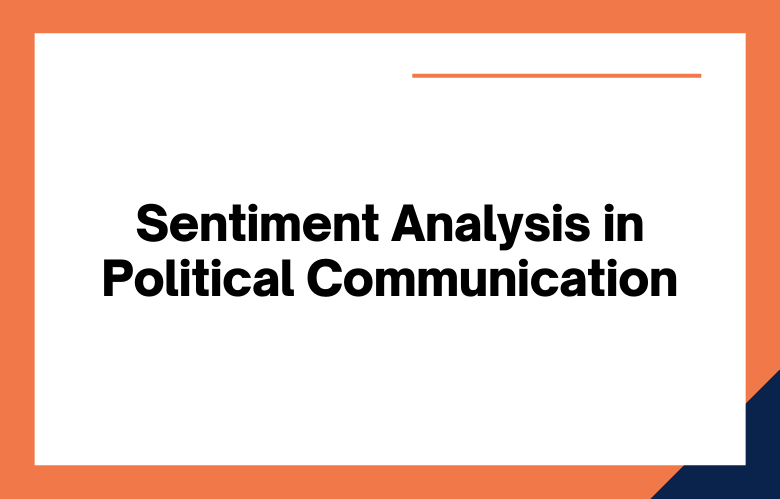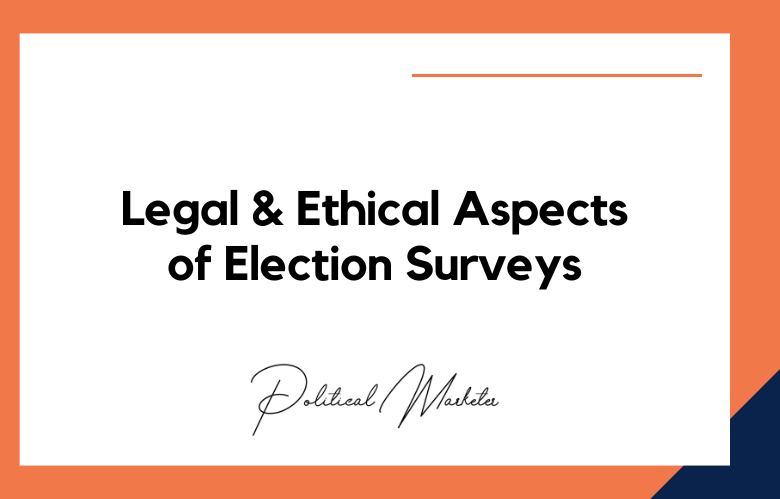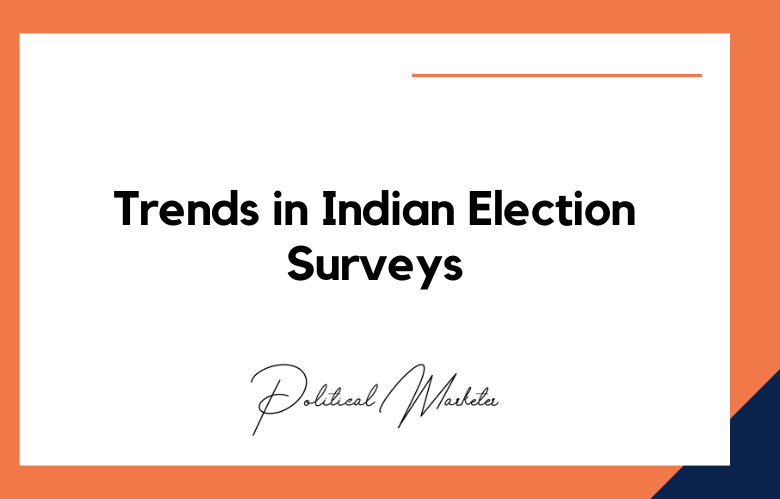The role of sentiment analysis in political communication is an increasingly important aspect of the current discourse. As elections grow more contentious and divisive, the need for a better understanding of how public opinion shifts as people voice their opinions on social media becomes critical.
Sentiment analysis can provide insights into the public’s thoughts and feelings about politicians, policies, and other aspects such as safety, education, or healthcare. It provides a window into what is happening in a society that no one else can access—like never before.
We will discuss how sentiment analysis plays a role in politics and why it matters now more than ever.
What is Political Communication?
Political Communication refers to the art of persuasive speaking and writing. It is also often used as a synonym for propaganda, an attempt to influence public opinion on political issues using techniques that blend emotional and rational appeals.
Political Communication transfers information from a source to a receiver through various channels. In this way, it’s important because it can influence people’s opinions and beliefs.
Political Communication studies how information and ideas are spread to influence political action.
Political Communication studies persuading people and why political arguments are made.
Political Communication is a branch of communication studies focusing on media coverage and political discourse surrounding politics.
Political Communication is a branch of Communication that studies how citizens and organizations generate, transmit, and receive political messages.
Using sentiment analysis to predict the opinion of the public
There are many ways to do this, but I think the best way is by doing sentiment analysis, which allows you to quantify how people feel about something.
Sentiment analysis is a method of analyzing people’s reviews of products, services, brands, etc. These evaluations predict public opinion using algorithms that help detect different emotions in the studies.
Several businesses use sentiment analysis to predict the popularity of their products.
The public’s opinion can influence market prices, but it’s hard to accurately read what people feel about something. Sentiment analysis solves problems by identifying positive and negative emotions in texts.
Text analysis to understand the public’s attitude is an excellent way to market products.
One of the significant ways this is being done is by using sentiment analysis on articles.
Sentiment dynamics analysis
The application of sentiment dynamics to understand how opinions change over time.
Sentiment dynamics analysis predicts an audience’s emotions based on the moods expressed in positive/negative words or phrases collected from users.
This study aims to quantify changes in a series of texts using the sentiment algorithm. The main goal is to establish a method that can be used to measure variations in political speech on social media.
We’ll briefly discuss the various approaches to sentiment analysis. We’ll mention a few of the most popular techniques that people use.
Measuring Sentiment in political text
Many people are interested in analyzing the tone of political speeches, but it’s challenging to get a system that will work well with the text.
The sentiment in the political text can often be challenging to measure. This is because opinions on politics are pretty varied and thus can produce a wide range of responses from people.
The issue in cognitive science is predicting people’s reactions to different news articles. While expecting how happy or sad they will be easy, accurately measuring their sentiment has proven more difficult.
The sentiment of a text is the emotional attitude that it communicates.
Building a negative sentiment dictionary
A negative sentiment dictionary is essential for detecting and understanding the context of unhappy or unsatisfied customers.
It’s hard to create a dictionary of negative sentiment words. Some emotions are ambiguous, and it isn’t easy to find examples of them in large volumes.
Sentiment analysis is a process of determining whether the test is positive, negative, or neutral.
One way to improve sentiment analysis is by building a dictionary of words associated with negative sentiments. It can be done in different ways, for example, through crowdsourcing or computational linguistics.
Sentiment analysis is the art of determining the attitude expressed by a speaker or writer in a piece of writing.
Making a negative sentiment dictionary is a great way to ensure all your articles are favorable. It’s straightforward and doesn’t take long at all.
Political Sentiment Analysis through Social Media
This article intends to define the development and identification of political sentiment through social media, specifically Twitter. It will explain how researchers can use machine learning techniques to train a system to identify political tweets with sufficient accuracy for them to be helpful.
It is essential to understand the political trends in countries. Different cultures, demographics, and social media platforms can provide insights into how people feel about political situations. Sentiment Analysis tools are perfect for this task because they can process large volumes of text.
Political Sentiment Analysis through Social Media: An Experimental Study on Twitter Data
Applications of Sentiment Analysis in Politics
Politicians must be honest and also represent the views of their constituents. They can do this by listening to what people say about them on social media. Sentiment analysis software allows users to gauge public opinion.
One of the most important uses for sentiment analysis in politics is to monitor social media trends. Many people will say bad things about a political figure; it’s easy to understand their feelings and how they might change over time.
Sentiment analysis is used to analyze the emotional state of a large group of people. It can measure their attitudes, opinions, and emotions about specific topics or issues at any given time.
Sentiment Analysis is used in politics to understand citizens’ thoughts about political decisions. It can be used during elections, special events, or everyday decision-making.
Sentiment analysis in politics is essential. I feel that it will help me understand people’s general opinions, which will allow me to serve them better.
Conclusion
We highlighted the importance of sentiment analysis in political Communication. We were able to see that a lot can be learned by analyzing what people are saying about candidates and their campaigns on social media platforms like Facebook and Twitter.
Social media provides citizens an unprecedented opportunity to express themselves openly without censorship or outright attacks from opposing camps.
Political professionals should take advantage of these new opportunities to understand constituents’ feelings about their candidate’s policies or campaign promises. If you’re excited about learning more about our services, please contact us today!
We’ve discussed how sentiment analysis can be used to understand political Communication better.
We hope you found the information in this article helpful and would love to hear from you about your thoughts on these issues.
If you have any queries about a sentiment analysis project, please get in touch with us for more information!
One way to get in touch is by filling out our online form on this site or give us a call at +91 9848321284. Let’s work together today!
Frequently Asked Questions (FAQs)
What is sentiment analysis in political communication?
Sentiment analysis is the use of natural language processing and machine learning techniques to determine the emotional tone of political content such as speeches, tweets, or public feedback.
How is sentiment analysis used by political campaigns?
Campaigns use it to measure public opinion, understand voter reactions to events or policies, and adjust their communication strategies in real-time.
Which types of data sources are analyzed for political sentiment?
Social media posts, news articles, campaign speeches, online reviews, voter surveys, and comments on digital platforms are key sources.
What are the benefits of using sentiment analysis in elections?
It helps parties gauge voter mood, craft resonant messages, detect crises early, and boost engagement by aligning tone with public emotion.
Can sentiment analysis predict election outcomes?
While not foolproof, large-scale sentiment analysis combined with other data sources can indicate voter leanings and electoral trends.
What tools are commonly used for sentiment analysis in politics?
Popular tools include IBM Watson, Brandwatch, Talkwalker, Google Cloud NLP, and custom Python libraries like TextBlob or Vader.
How accurate is sentiment analysis in multilingual political contexts like India?
Accuracy depends on the quality of regional language processing models and the training data used for dialects, slang, and cultural context.
What role does AI play in sentiment analysis for political strategy?
AI automates sentiment detection, scales data processing, identifies patterns, and supports real-time decision-making based on voter mood.
Can sentiment analysis detect misinformation or coordinated campaigns?
Yes, spikes in sentiment or sudden shifts can indicate misinformation campaigns or bot-driven narratives influencing public opinion.
How do political strategists use sentiment heat maps?
They visualize geographic sentiment distribution, helping target messaging by region and identifying emotional hotspots among voters.
Is sentiment analysis used for opposition tracking?
Yes, campaigns analyze competitor mentions to assess sentiment trends, negative publicity, or growing support for rival candidates.
Can sentiment analysis improve political speeches?
By analyzing past responses to tone and content, politicians can craft future speeches that better resonate with emotional expectations.
What are the limitations of sentiment analysis in political communication?
It may misread sarcasm, irony, or complex language and is affected by bias in training data or limitations in local language support.
Does sentiment analysis influence media buying in campaigns?
Yes, ad spend and message placement are increasingly optimized based on sentiment trends and the emotional pulse of voter groups.
How is real-time sentiment analysis used during debates or rallies?
Campaigns monitor live social media reactions to assess performance and guide immediate communication responses or post-event messaging.
Can sentiment analysis support policy development?
Yes, analyzing public sentiment around policies helps parties refine proposals or prioritize issues that voters care about most.
What is emotion detection and how is it different from sentiment analysis?
Emotion detection goes deeper than sentiment by identifying specific feelings like anger, joy, or fear, offering more nuanced insights.
How do political parties track sentiment across platforms?
Cross-platform monitoring tools aggregate mentions and analyze sentiment across Facebook, X (Twitter), YouTube, Instagram, and forums.
Can sentiment analysis help reduce political polarization?
When used ethically, it can identify common concerns and bridge divides by crafting messages that appeal to shared emotions.
What is the future of sentiment analysis in political communication?
Expect more real-time, hyper-localized insights, improved emotion recognition, and integration with AI-powered campaign automation tools.










